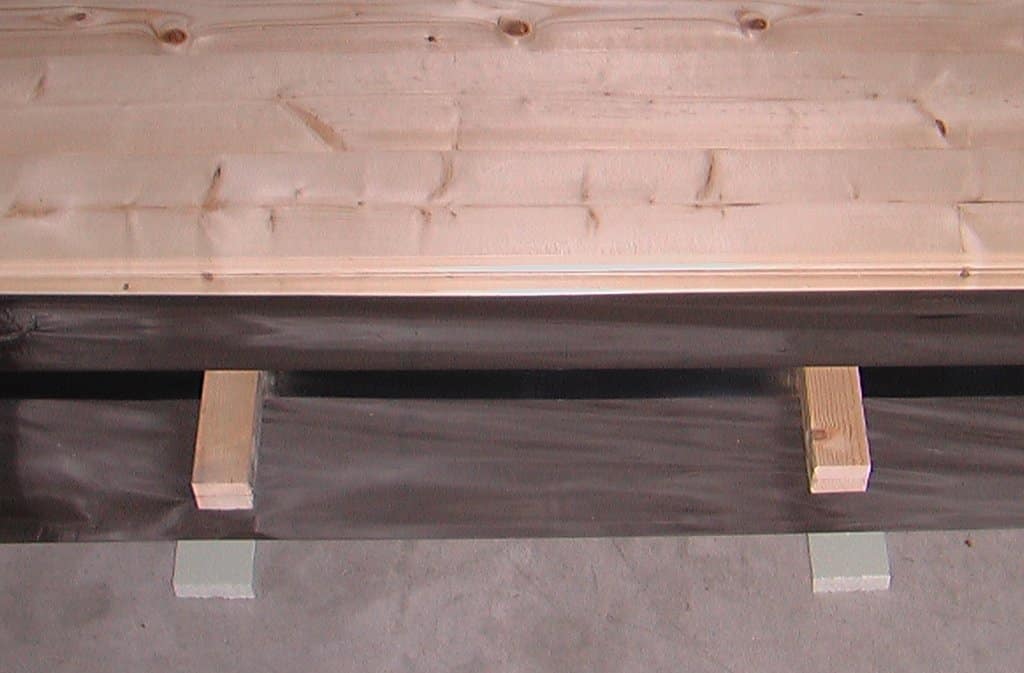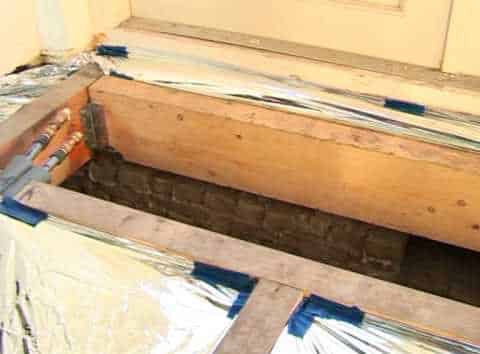Insulating a wooden floor, working from above the floor
It is not recommended to place insulation material above wooden floorboards. This can cause an increase of moisture in the wood, which can result in wood rot. The only way to insulate a wooden floor, working from above, is to remove the entire floor covering and (some of) the floorboards beneath the covering. This allows you to access the floor supporting beams from above and attach the insulation material between these beams. How this is done can be seen on the video alongside. If the ground under the beams is easily accessible, Soil Foil is laid here first. This prevents moisture from the soil entering the space. Thermos Cushions are then stapled between the beams. The floorboards and any floor covering on top of the boards can then be replaced.
Insulating a concrete floor without a crawl space beneath it
Insulation can be installed on top of a concrete floor, without any negative effects. Achieving a good insulation value does, however, require some height, regardless of which material is used. Expect to lose at least 10 cm of room height when insulating above a concrete floor. It is therefore practical to remove as much of the floor as possible.
The thicker the insulation layer, the better the insulating performance. If you plan to install underfloor heating, it is especially important to incorporate as much insulation in the floor as possible. The thickness of the insulation layer depends on the space available between the top of the concrete layer and the bottom of the door frames. You should also take into account the thickness (height) of the floor covering used. There are two options for applying TONZON in these cases. Read more below.

Building up insulation in layers
Using a slatted base and layers of reflective foil, an insulation pack can be built up layer by layer. As illustrated in this image.
This method is useful when the available room height is limited, as you can choose the thickness and number of layers of insulation. More layers and thicker layers will increase the insulation value. For more information on insulation value, see our insulation value calculator.
Insulating with TONZON Thermos Cushions
Another option – often a bit easier – is insulating with Thermos Cushions. These are air chambers made from reflective foil, and are normally hung under the floor. In order to use them in this situation, a framework of beams must first be laid. The beams need not be very thick, as they will be supported by the underlying concrete floor. However, they should be close enough to each other to support the floorboards or other floor surface that will be laid on top of them. For proper installation of the air cushions, the beams must have a height of about 10 to 15 cm. The room must therefore be sufficiently high to allow for the floor surface to be raised to this extent. As in the case of a wooden floor without underlying crawl space, the air cushions are installed from above, as shown in the video.


